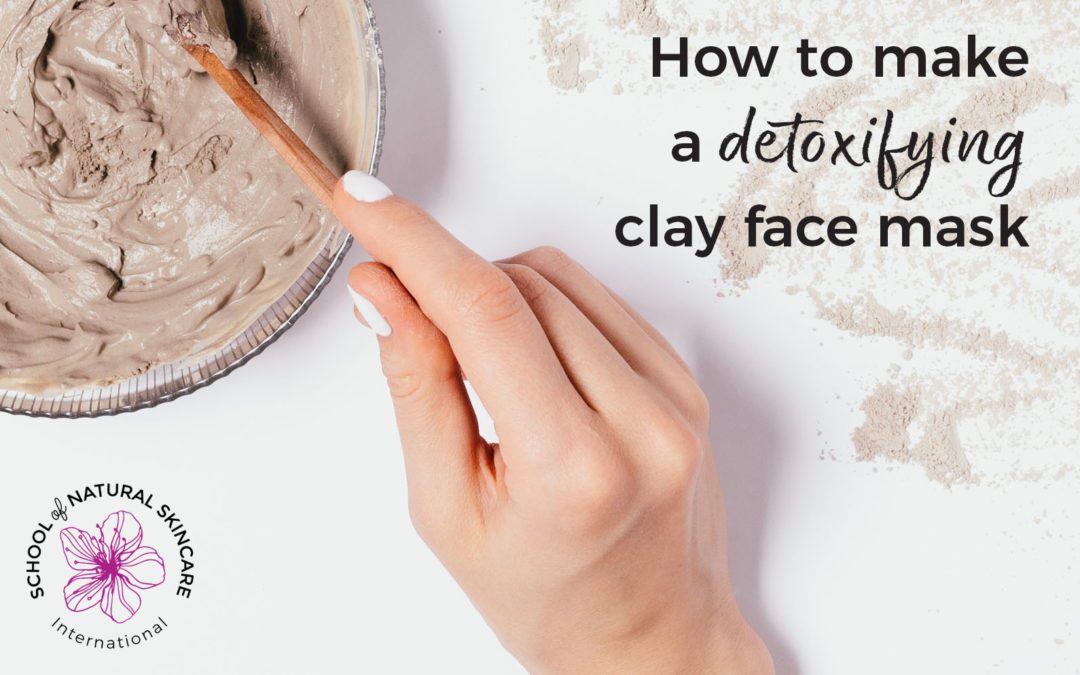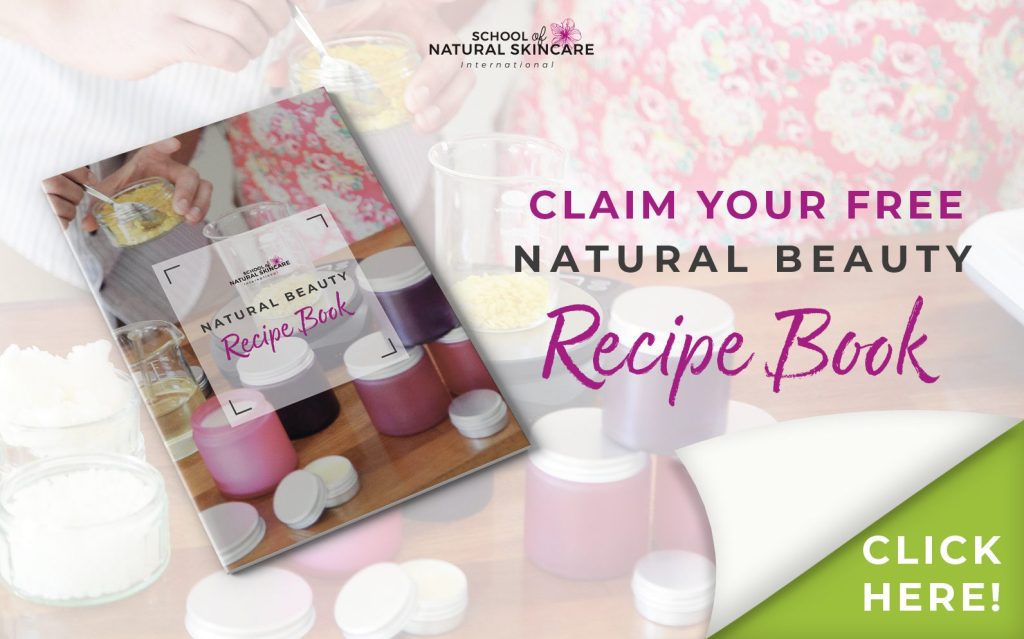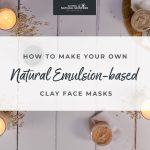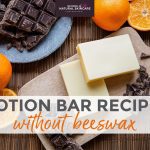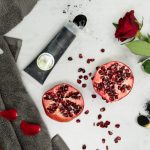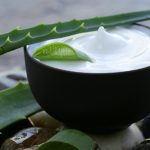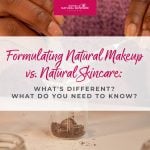Clay-based face masks are a wonderful way to deeply cleanse and detoxify the skin. There are many types of cosmetic clays which make superb face masks and we highlight some of the best ones below
Clays offer many skin care benefits and present us with a unique and different way of looking after our skin.
For example clays:
- Are rich in minerals
- Can be used to great effect for deeply cleansing the skin as they
- Help to draw out toxins making them a wonderful aid for a deep cleanse
- Help tone the skin and have an exfoliating action too
- Can also be used as a cleanser if you massage onto the skin in circular motions (avoiding the eye area) and then rinse off before they have set.
In this article we’re going to look at:
- How to make your own detoxifying clay-based face mask
- Choosing the right clay for your face mask
- The best natural ingredients used to make clay-based face masks
- How to make professional quality face masks for yourself, or to sell
- Formulation for a detoxifying face mask
How to make your own detoxifying clay face mask
This will make enough for one treatment. You’ll find information about all the ingredients below and at the bottom of this article you’ll find a professional formula (and recipe for a 10g batch) for a detoxifying face mask.
1. Select your type of clay. Two teaspoons is about the right amount for one treatment.
2. Select any additional ingredients such as exfoliating agents or fruit powders. 1/4 – 1/2 a teaspoon should be about right.
3. If you have dry skin add a drop or two of a carrier oil such as peach kernel or rosehip.
4. Add a drop of essential oil (optional – do take care with essential oils, read the safety advice and check contraindications).
5. Choose your liquid of choice: water, flower water, milk, aloe vera juice, herbal infusion, yoghurt. Mix in enough to make a thick paste (usually 1-2 teaspoons).
6. Apply to your face avoiding the eye area and relax for 10-15 minutes. Rinse off and feel radiant!
*Note: these masks should be mixed just before use and discarded afterwards. Once clay is mixed with water it is difficult to preserve and so should not be stored for reuse later. As with all products, we advise doing a patch test before use*
Choosing the right clay for your face mask
Different clays have different properties, so it’s a good idea to get to know your clays. This way you will be able to choose the most suitable one for you. Test out a couple of different ones to see how they feel on your skin. Clays differ in chemical composition, particle size and particle shape. Those properties affect how absorbent they are – more absorbent clays are more suitable for oily skin, while drier skin requires less absorbent clays.
Green clay: cleansing, detoxifying, toning and draws out impurities. Green clay is suitable for normal, neglected, oily skin and acne.
Rhassoul clay: light brown clay with wonderful exfoliating, cleansing and detoxifying properties. It draws out excess oils and impurities from deep within the skin. Rhassoul is also highly nourishing for the skin thanks to its high mineral content and has anti-inflammatory and antiseptic qualities.
White cosmetic clay (Kaolin clay): one of the most commonly available and versatile cosmetic clays, it has a high mineral content, a gentle nature and absorbent properties. Ideal for sensitive, dry and mature skin types.
Fullers Earth: deeply cleansing it’s used in masks to help absorb oils and prevent acne. Mix in equal amounts with Kaolin clay or clay of your choice.
Pink clay: A mild clay, rich in minerals. Great for gently cleansing and detoxifying sensitive skin.
The best natural ingredients used to make clay-based face masks
Exfoliating agents – Exfoliating agents are tiny solid particles that help to remove dead skin cells. By gently massaging exfoliating agents on the skin, you will reveal soft and smooth radiant skin. Different mechanical exfoliant have different properties – they differ in size, shape and hardness, which affect how strong or gentle they are.
Ground rice – an excellent exfoliator for the face when applied with gentle circular motions. Can be bought inexpensively from most supermarkets.
Ground almonds – similar to ground rice, good in fresh face treatments (doesn’t keep very well). An excellent exfoliator for the face when applied with gentle circular motions.
Jojoba beads – these are made from jojoba oil and are smooth grains useful for exfoliating. They can be added to creams, lotions, gels and face masks to add an exfoliating function.
Bamboo powder – made from bamboo, this is an exfoliating powder which you can add to creams, lotions, gels, and face masks for an exfoliating action.
Fruit powders – we like these ones sold by Gracefruit (UK).
Essential oils – This very much depends on your own personal preferences, but to get you started we would recommend the following choices – frankincense, lavender and geranium. Read more about them in our article, How to make an anti-aging facial serum, where you’ll also get a formulation for a nice simple – but effective – face serum!
Essential oils are usually added to the dry clay mixture. Since they are liquid, after adding them to the powders the mixture needs to be mixed very well in order to evenly distribute the essential oil throughout the powders.
Alternatively, you can add essential oils to the activated mask – this means after you have mixed the powders with water to form a paste. Add the essential oils to the paste and mix thoroughly.
Liquids – Liquids are required to activate clay masks. When a dry clay mask is mixed with a liquid, it turns into a spreadable paste that can easily be applied to the skin and do its wonders. Besides activating the mask and bringing moisture to your skin, different liquids can have additional skin benefits.
Flower waters – also known as hydrolates are a by-product of the distillation of essential oils and contain similar properties to essential oils in a mild form. They are a lovely, gentle and fragrant addition to face masks, toners and spritzers.
Milk and yoghurt – contain lactic acid which acts as a gentle exfoliator, removing dead skin cells and leaving skin soft and smooth.
Aloe vera – anti-inflammatory, antiseptic, antibacterial, rejuvenating, soothing and calming for the skin, relieves sunburn – stimulates epidermal growth and repair.
How to make professional quality face masks for yourself, or to sell
We hope this article is useful for you and we hope you enjoy using the formulation below too. If you want to learn more about formulating your own natural & organic face masks, then we’re here to help and there are a few options for you.
If you are specifically interested in formulating your own face masks, then you’ll want to join our Certificate in Natural Face Mask Formulation. Here you’ll learn to formulate a range of clay-based and emulsion-based face masks to professional standards. You can find out more about this course here.
However, if you are interested in learning how to make face masks as well as other natural skincare products, such as creams, lotions, balms, butters, oils, scrubs, toners, and spritzers etc, then you’ll want to either look at our Certificate in Making Natural Skincare Products or our Diploma in Natural Skincare Formulation.
What’s the difference between these two courses?
Well, the Diploma in Natural Skincare Formulation will teach you to formulate your own complete range of natural & organic skincare products from scratch, like a professional, without following other people’s recipes, for yourself or to sell. It will enable you to create products to sell and help you to know what to do to be able to launch your own brand – if that’s what you’d like to do. Find out more here.
Our Certificate in Making Natural Skincare Products course is for those natural beauty lovers who want to make gorgeous natural skincare products by following other people’s recipes for yourself, friends and family. You’ll cultivate the practical skill required to make your own products, learn a lot about a wide range of natural & organic ingredients and you’ll have access to over 120+ recipes created by our team of qualified cosmetic scientists and formulators. Find out more here.
Any questions? Just reach out to us by email using hello@schoolofnaturalskincare.com . We hope you enjoy making your own face masks!
Formulation for a detoxifying face mask
Example formula: Detox green tea and spirulina clay mask
| Phase | INCI name | Trade name | Function | w/w% | Grams (for 10 g batch) |
| A | Kaolin | Kaolin clay | Absorbs oils/sebum | 45 | 4.5 |
| A | Illite | Green clay | Soothing | 30 | 3.0 |
| A | Corn starch | Zea Mays Starch | Absorbent, thickener | 20 | 2.0 |
| A | Spirulina Platensis Powder | Spirulina powder | Active ingredient, detoxifying, contains micronutrients | 4 | 0.4 |
| A | Camellia Sinensis Extract | Green tea extract (powdered) | Active ingredient, antioxidant | 1 | 0.1 |
Instructions:
1. Weigh all ingredients and mix them together thoroughly.
2. Store in a closed container protected from moisture.
How to use:
1. Take a small amount of powdered mix (approximately 10 grams) and mix it with water or hydrosol. Add the water slowly, until you reach a consistency of a soft, spreadable paste. Apply to cleansed facial skin and leave for around 10 minutes (or just before it starts to dry). Rinse with warm water.
2. Discard any leftovers of the mask that was mixed with water – it is prone to microbial spoilage. Dry powdered can be stored for a longer period of time.
If you’d like to use essential oils when you activate your face mask, please check the information about this in this article above for guidance.
Click the image below to download your
Free Natural Beauty Recipe Book!
Learn to make your own natural skincare products with luxurious natural ingredients.
Download this fabulous book and discover recipes for:
- Frankincense Anti-Aging Facial Serum with Coenzyme Q10
- Lavender and Geranium Rejuvenating Facial Serum
- Protective Winter Time Hand Cream
- Orange and Ylang Ylang Facial Moisturizer for Dry Skin
- Grapefruit and Orange Stretch Mark Body Butter
- Soothing and Moisturizing Facial Mist

